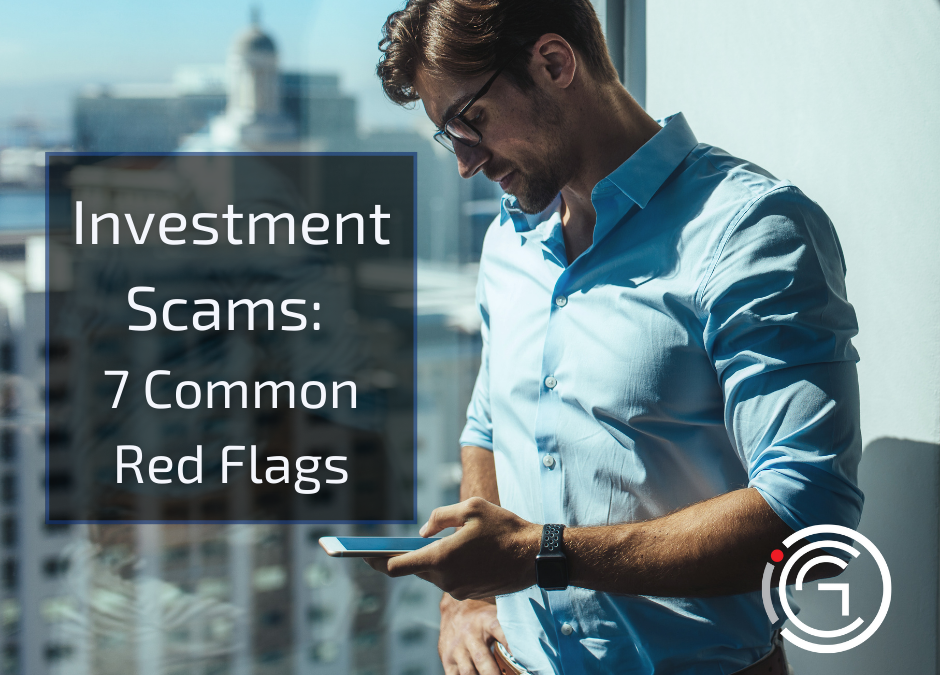Investing your money is a great way to prepare for retirement and help your financial goals. While investing is vital for smart saving, not all investments are on the up and up. While there is always some degree of risk when investing any funds, some investment opportunities are actually scams designed to steal investors’ money. It is essential to know how to spot one before you give them your money. Below are some of the red flags you may find with investment scams.
1. A Promise of a High Return With Minimal Risk
The level of risk with investments generally is most often related to the size of the return. The greater the return, the greater the risk. If you are being told that there’s little or no risk, the investment may be a scam.1
2. The Investment Was Unsolicited
Investments are often brought to you by a financial professional or in response to your inquiry. If you are offered an investment you did not inquire about from someone other than your trusted financial professional, you should proceed cautiously.2
3. They Are Using Aggressive Sales Tactics
To ensure that investors fall for their scam, scam artists will become aggressive to get you to close the deal. They may refer to the investment as the opportunity of a lifetime and pressure you to invest quickly without researching. Reputable financial professionals will let you take the time to research the investment so that you understand the potential risk and rewards. If you feel pressured to make a decision, you should walk away.2
4. They Are Asking for Non-Standard Payment Methods
Most investments are handled by check or bank transfer to a U.S.-based account. Scam artists may tell you to wire transfer your money to an overseas account or use more unconventional payment methods, such as cash or gift cards. These payment methods will leave you little recourse if the investment turns out to be a scam, and you will likely not recover your money.1
5. They Are Not Registered Professionals
A large percentage of investment fraud is committed by unregistered persons. To help avoid the risk of falling prey to an investment scam, you should only invest with financial professionals who and properly licensed and registered.1
6. The Sales Documents Are Sloppy or Have Errors
You should not enter into any investment where the details or sales order are not in writing. If you are refused documents, the investment is likely a scam. If you are given sales documents, read through them carefully. Everything should be clearly stated and free of spelling or grammatical errors.2
7. No One Else is Involved in the Investment
With many investments, there will be multiple parties involved in the deal. This may include accountants, law firms, or brokerage firms. If no one else is involved in the investment, or you are told not to contact any other parties involved, it could be a red flag that the investment is a scam.2
Important Disclosures:
Content in this material is for educational and general information only and not intended to provide specific advice or recommendations for any individual.
Investing involves risks including possible loss of principal.
All information is believed to be from reliable sources; however, LPL Financial makes no representation as to its completeness or accuracy.
This article was prepared by WriterAccess.
LPL Tracking #1-05377994
Footnotes:
1 “Red Flags of Investment Fraud Checklist,” Investor.gov, https://www.investor.gov/protect-your-investments/fraud/how-avoid-fraud/red-flags-investment-fraud-checklist
2 “Investor Alert: 10 Red Flags That an Unregistered Offering May Be a Scam,” SEC.gov, https://www.sec.gov/resources-investors/investor-alerts-bulletins/10-red-flags-unregistered-offering-scam
